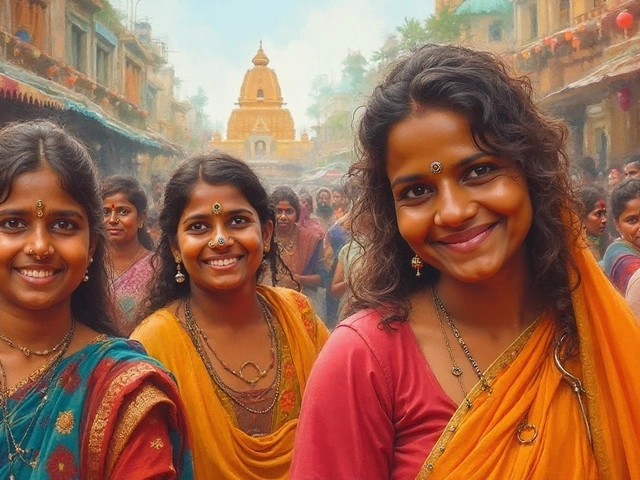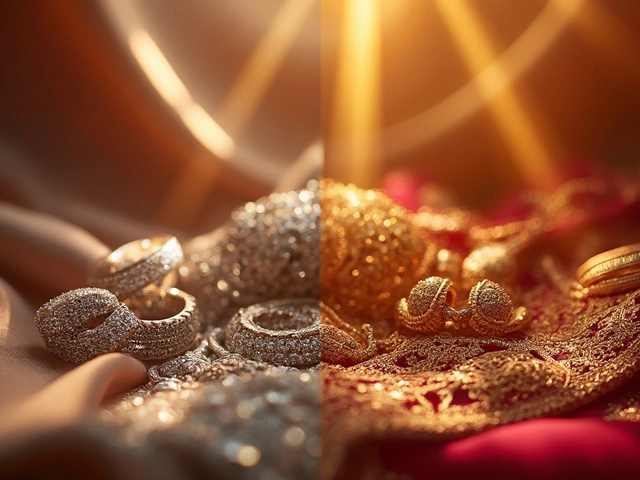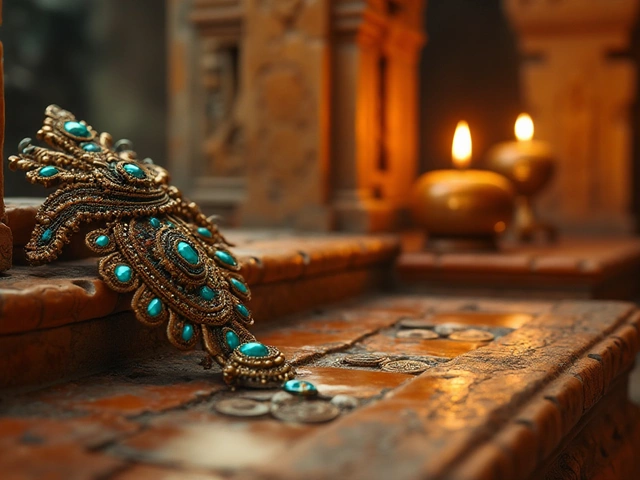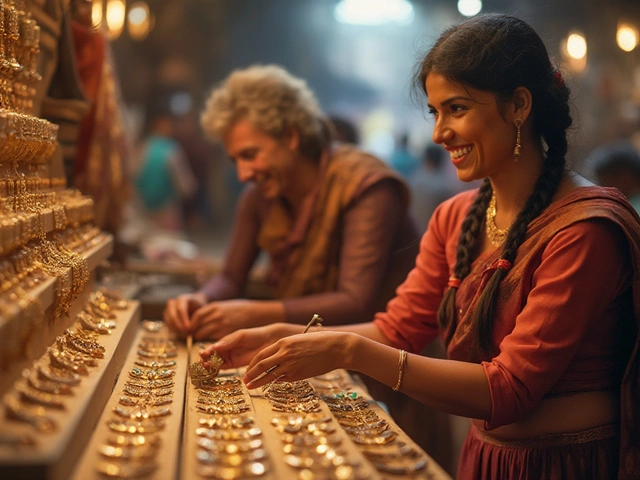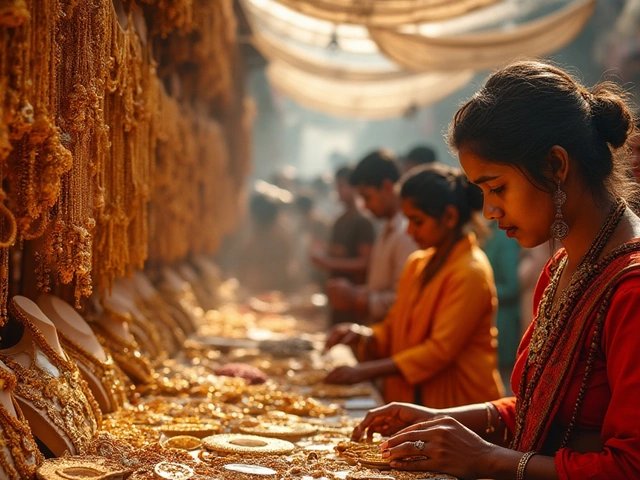Religious Importance of Indian Jewellery
When you look at a piece of Indian jewellery, you’re not just seeing gold or silver – you’re seeing a story, a prayer, a promise. From the tiny nose stud that marks a rite of passage to the black beads of a mangalsutra that seal a marriage, each item carries a weight that goes far beyond its sparkle.
Why does a simple bangle feel so powerful in many homes? Because it’s more than an accessory. In Hindu traditions, bangles are linked to fertility, prosperity, and the goddess Lakshmi. Wearing them on special occasions isn’t just for style; it’s a way of inviting blessings into the household.
Key Pieces and Their Sacred Meanings
Nose studs and pins – These aren’t just fashion statements. In Hinduism, a nose piercing (usually the left nostril) is associated with the Goddess Parvati and is believed to ease childbirth. The tiny stud you see on a bride’s face is a nod to centuries‑old customs and a symbol of marital devotion.
Mangalsutra – The black bead you spot on many married women’s necks isn’t just a design quirk. Black represents the protective power of the goddess Kali, while the gold chain symbolizes the bond between partners. Some families also add a tiny gold pendant of a deity, turning the necklace into a wearable prayer.
Black bangles and beads – Often paired with red or gold, black accessories carry a dual meaning. They ward off the evil eye and bring balance to the wearer’s aura. In many regions, gifting black bangles to a newlywed is a way of wishing them a life free from negativity.
Temple jewellery – Pieces that feature deities like Lord Ganesha or Goddess Saraswati aren't meant for casual wear. They’re usually offered at temples as a mark of devotion, then taken home as a blessed keepsake that carries the temple’s energy.
How to Honor Traditions When Buying
First, know the story behind the piece you want. If you’re eyeing a nose stud, ask the seller about the type of metal and any hallmarks – many families prefer 22‑carat gold for its purity, believing it aligns with spiritual cleanliness.
Second, respect the regional variations. A mangalsutra from South India might have a different design language than one from the North, but both serve the same purpose of sealing a marriage. Choose a style that feels right for your cultural background or the one you love most.
Third, think about the material’s symbolism. Silver is often used for items related to the moon or feminine energy, while gold is tied to the sun and masculine strength. Mixing them can create a balanced harmony if that’s what you’re after.
Lastly, keep the rituals alive. When you receive a piece, many families perform a simple puja – lighting a lamp, offering a flower, and saying a short prayer. It’s a quick way to infuse the jewellery with positive vibes before you wear it.
In short, Indian jewellery is a living archive of faith, culture, and personal identity. Whether you’re picking a pair of earrings for a wedding or a simple chain for daily wear, understanding the religious importance behind each design adds depth to your purchase. It turns a beautiful object into a meaningful companion that carries your stories and blessings wherever you go.
Why Sikhs Carry a Kirpan: Understanding its Religious and Cultural Significance
The Kirpan, a ceremonial curved dagger, holds profound significance in Sikhism. It symbolizes courage, self-defense, and a commitment to social justice. Learn about its historical roots, spiritual meaning, and everyday practice among Sikhs, as well as the challenges they face in modern society. Offering insights into its cultural and religious aspects, this article unpacks why carrying a Kirpan is not only a choice but a cherished tradition.
Why Sikhs Carry a Kirpan: Understanding Its Religious Importance
The kirpan is more than just a ceremonial dagger for Sikhs; it symbolizes deep religious and cultural meanings. This article explores why carrying a kirpan is significant in the Sikh faith, delving into its historical roots and how it is both a duty and a reminder of the values Sikhs cherish. Understanding this tradition opens a broader perspective on Sikhism and its practices.


